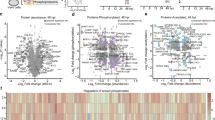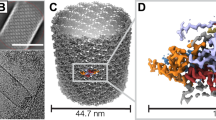Abstract
THE technique of cutting ultra-thin sections for electron microscopy has made it possible to follow the behaviour of certain viruses in the cell, and this is particularly true of the nuclear virus diseases of insects. The present note describes the remarkable behaviour in the nucleus of the polyhedral virus which causes a blood disease in the larva of the fly, Tipula paludosa 1. Sections through blood cells in the early stages of infection show an apparent condensation of the chromatic material in the centre of the nucleus in which the virus rods can be seen developing (Fig. 1). Most of the virus rods at this stage are concentrated in the centre though some occur scattered throughout the nucleus. The virus rods are never observed on the outer side of the nuclear membrane.
This is a preview of subscription content, access via your institution
Access options
Subscribe to this journal
Receive 51 print issues and online access
$199.00 per year
only $3.90 per issue
Buy this article
- Purchase on SpringerLink
- Instant access to full article PDF
Prices may be subject to local taxes which are calculated during checkout
Similar content being viewed by others
References
Smith, Kenneth M., and Xeros, N., Nature, 173, 866 (1954).
Author information
Authors and Affiliations
Rights and permissions
About this article
Cite this article
SMITH, K. Intranuclear Changes in the Polyhedrosis of Tipula paludosa (Diptera). Nature 176, 255 (1955). https://doi.org/10.1038/176255a0
Issue date:
DOI: https://doi.org/10.1038/176255a0



